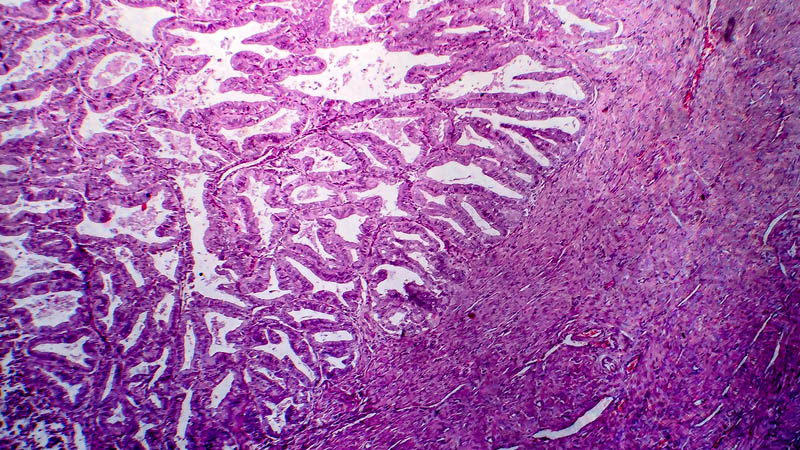Hemostatic effect of high dose irradiation in advanced cervical cancer
Ryszard Krynicki, Bogusław Lindner, Joanna Jońska-Gmyrek, Jagna Stanaszek, Mariusz Bidziński
 Affiliacja i adres do korespondencji
Affiliacja i adres do korespondencjiIntroduction: The first symptom of advanced cervical cancer is vaginal bleeding. Profuse bleeding may sometimes require embolisation or ligation of iliac arteries. However, in the case of massive infiltration of parametra, surgical intervention may be impossible. In such cases, a viable alternative is palliative irradiation. Aim of paper was to assess direct haemostatic effect of high dose, short term irradiation and radiation side-effects in patients undergoing such treatment. Material and method: The study included 42 patients treated at the Dept. of Female Genital Neoplasms of the Centre of Oncology in Warsaw, undergoing pelvic irradiation using 5 fractions of 4 Gy up to a total dose of 20 Gy. The patients’ mean age was 61 y (range: 35-86 y). All patients were in FIGO grade IIIB-IV. Prior to irradiation, 5 patients had a nephrostomy placed due to hydronephrosis, while 12 patients received 1-6 units of blood because of low haemoglobin level. Early and late radiation-induced reactions were assessed. Results: Direct haemostatic effect was obtained in 34 patients (83%); thereof in 26 patients (63%) after the first course and in 8 patients (20%) after the second course. A statistically significant correlation (χ2 = 12.7869; p=0.031) was found between baseline haemoglobin level and haemostatic effect. Conclusions: 1. In patients presenting with severe bleeding due to advanced cervical cancer, a satisfactory haemostatic effect may be obtained by high dose, short term irradiation of the pelvis. 2. In patients presenting with a higher haemoglobin level, this effect may be obtained already after the first course of irradiation. 3. 5x4 Gy fractionation is well tolerated by the patients. Neither early nor delayed severe radiation-induced reactions have been observed.









